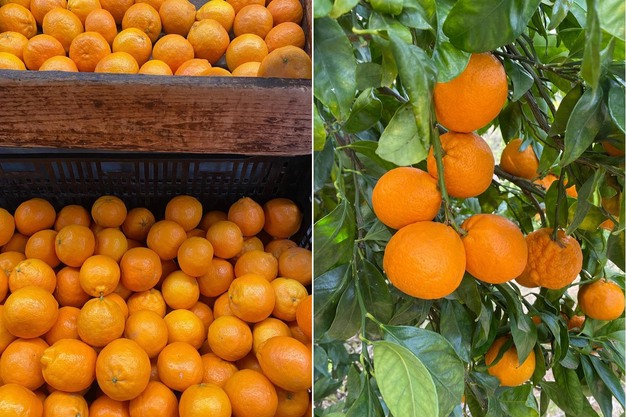It's a beautiful, albeit smaller, crop of Ojai Pixie mandarins this season. "We didn't get any natural disasters to scar up the fruit so it's very nice-looking fruit. We have about two-thirds of the normal volume so the crop size is down but the fruit is a bit larger than a normal year because there is less per branch," says Emily Ayala of Friend's Ranches, a grower, packer and seller of Pixie mandarins based in Ojai, California, adding that the eating quality is strong this year as well. "Ojai Pixies are very alternate bearing fruit so it's an off year."
Last season did have a larger bloom but a lot of it didn't set due to cold, wet weather during bloom. Bloom was also late last year and this year the season has also started about 10 days behind normal. "Our goal has always been to get the fruit out to Southern California markets by March 1 and we barely did that," said Ayala, noting that harvest started on February 28th.
Harvest will go into early May, depending on the market. Sometimes movement slows down in mid-April when the start of the California cherry season can impact the movement of Ojai Pixies. "When the cherries come in, people often want to switch their shelf space," says Ayala.
So far demand for the fruit has outweighed the supply of Ojai Pixies. "It's a smaller crop and I think there's also a smaller crop overall of seedless mandarins. There's less fruit state-wide for all mandarin varieties," says Ayala.

The return of foodservice
That's a welcome development. Ayala says five years ago already, growers and shippers knew that seedless mandarins in California were getting over planted and then COVID-19 shut down foodservice business starting in 2020. "This year we've gotten some of our foodservice customers back. Some USDA grants are increasing fresh fruit purchasing by school districts which we appreciate as farmers," says Ayala. "All of those accounts had dried up during the COVID years and some of the smaller distributors that we worked with for schools disappeared in that time which was sad. However, it looks like customers are back for fresh, local produce."
As for pricing, prices have increased this year though Ayala notes its pricing didn't increase last year due to the larger crop. "Although our costs were up significantly, we tried to keep our pricing stable," says Ayala. "We still were reeling from the unknowns of losing some of those foodservice customers during COVID and we needed an outlet for a lot of fruit so we kept our prices the same."
This year, behind the price increase is the fact that over the last two years, Friends Ranches' costs of doing business has gone up 18 percent. "California is not an inexpensive place to do business and it's been frustrating to not pass those costs on to the consumers. We do want people to be able to afford our products, but we also need to keep our growers afloat," says Ayala, noting that 18 percent didn't include the costs of growing the fruit which includes fertilizer and labor costs.
Most of Friends Ranches' farms are also small family farms where the owners are doing most of the growing of the fruit themselves and providing much of the labor. "So we're not going to be here if we can't pay our bills. It's hard and I don't know where California agriculture is headed. It's a sad deal for a lot of people right now," says Ayala.
 For more information:
For more information:
Emily Ayala
Friend's Ranches/Ojai Pixie Growers
Tel: +1 (805) 646-2871
friends@friendsranches.com
www.friendsranches.com
